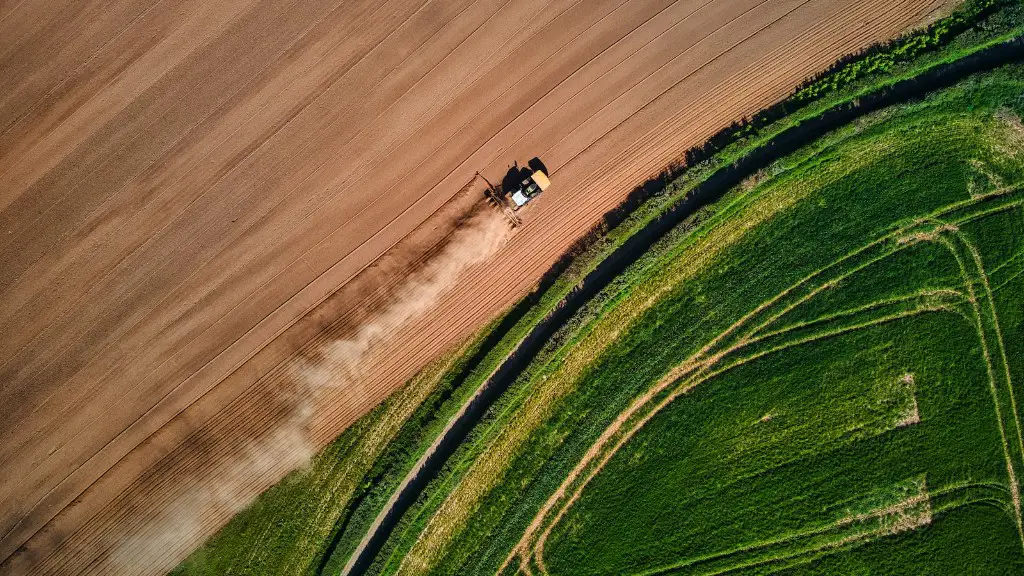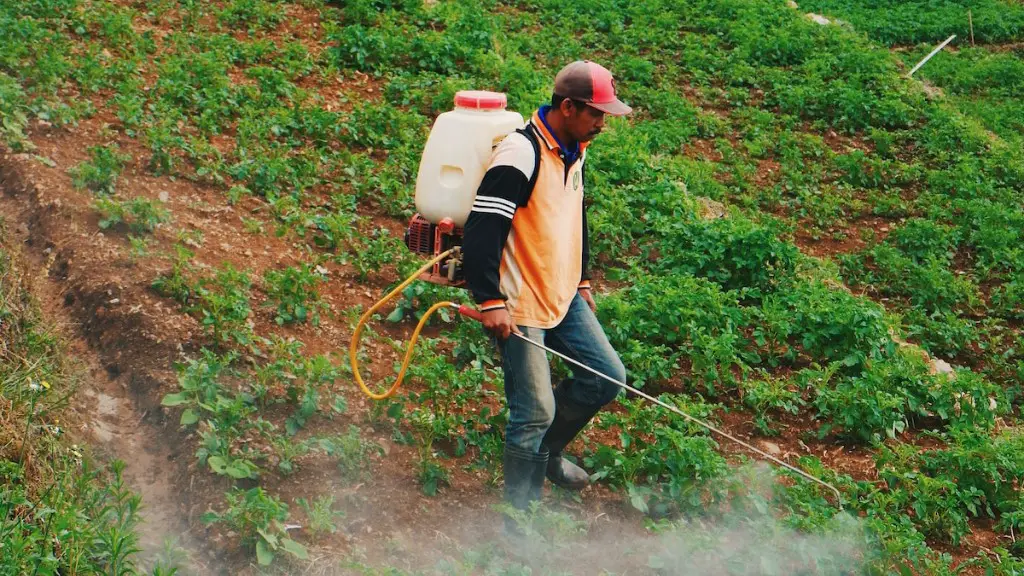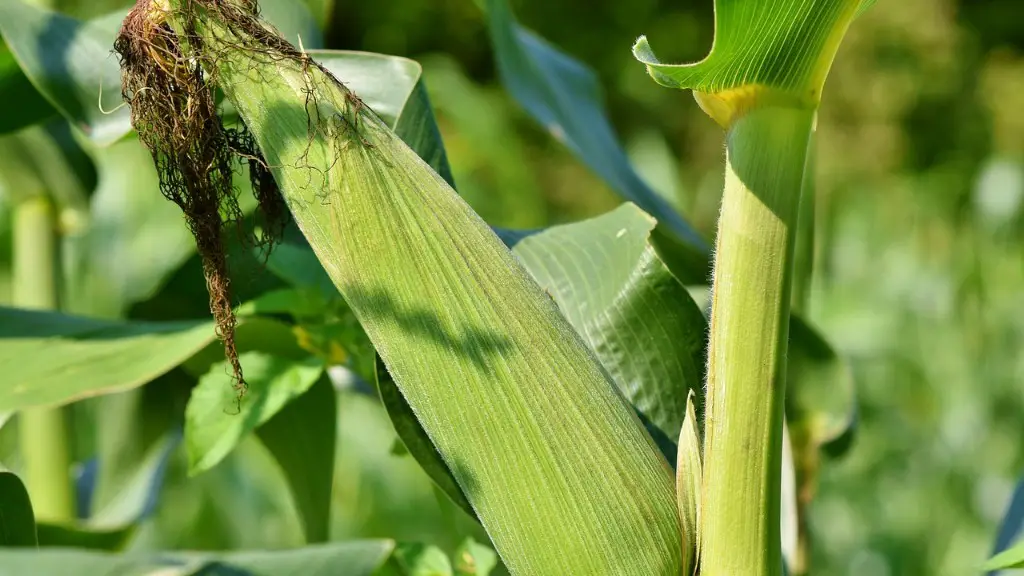In primitive agriculture, the main tool is the hoe. This type of agriculture is labor-intensive and only feasible in areas with a small population density. Farmers clear land by burning trees and underbrush and then Plant crops in the ashes. They also use the hoe to weed the fields and to harvest their crops. Primitive agriculture is not very productive, so farmers must supplement their diet with hunting and gathering.
Primitive agriculture is a form of agriculture that uses simple tools and methods.
What is primitive type of farming?
Primitive subsistence agriculture, also known as shifting cultivation or slash and burn cultivation, is a type of farming in which a patch of land is cleared and then set on fire. This patch of land is used to sow seeds and grow crops.
Subsistence farming is a type of agriculture where farmers grow crops and raise livestock for their own consumption, as opposed to selling them for profit. This type of farming is typically found in developing countries, where families often rely on their own land to provide them with food and other necessities. Although subsistence farming is often less productive than commercial farming, it can be a more sustainable way of life for small-scale farmers.
What is subsistence and primitive farming
Primitive subsistence farming, also called slash and burn agriculture or shifting cultivation, is a type of farming in which a patch of land is cleared by slashing the vegetation and then the slashed plants are burnt. The ash obtained from burning plants is mixed with the soil and crops are grown.
Of the four modes of subsistence, foraging is the most primitive. Foraging societies are typically small, with simple social structures. Their members rely heavily on wild plants and animals for food, using only simple tools and weapons.
Pastoralism is a step up from foraging, and is based on the domestication of animals. Pastoralists typically herd sheep, goats, or cattle, and use them for food, as well as for wool, milk, and other products. They often live a nomadic lifestyle, moving their herds to new grazing grounds as needed.
Horticulture is the next step up, and is based on the cultivation of plants. Horticulturalists typically grow fruits, vegetables, and other plants, using simple tools and techniques. They often live in small villages, and may trade with other groups for goods they cannot produce themselves.
Agriculture is the most advanced form of subsistence, and is based on the intensive cultivation of plants. Agriculturalists typically grow crops such as wheat, rice, and corn, using sophisticated tools and techniques. They often live in large villages or towns, and trade extensively with other groups for goods they cannot produce themselves.
What are the features of primitive farming?
Primitive subsistence farming is a type of agriculture that is based on natural resources and is not very productive. This means that the farmers rely on environmental factors, such as the monsoon, to produce their crops. The soil’s fertility is also a key factor in this type of farming. Hill slopes are preferred for primitive subsistence farming because they have better drainage. This is important for this type of farming because it helps to prevent crop loss due to flooding. The farmers who practice this type of agriculture usually grow food crops and cereals to feed their families.
Primitive subsistence agriculture, also known as shifting cultivation, is a form of agriculture that involves clearing a piece of land, burning the vegetation, and then planting crops in the ashes. This type of agriculture is often practiced in areas with poor soil and limited resources. Shifting cultivation is currently discouraged in many parts of the world due to its negative impact on the environment, including deforestation and soil erosion.
Which are the two types of primitive farming?
Primitive subsistence agriculture is a type of subsistence agriculture that includes shifting cultivation and nomadic herding. shifting cultivation is a type of agriculture where farmers move their crops from one piece of land to another after a period of time. nomadic herding is a type of agriculture where farmers move their herds of animals from one place to another in search of pasture or water.
Primitive subsistence agriculture is a form of agriculture that is based on the cultivation of crops and the raising of livestock for the sole purpose of providing for the needs of the farmer and his family. This type of agriculture is typically found in developing countries where the land is not suited for large-scale commercial agriculture.
Is primitive farming horticulture
Horticulture can play a significant role in impact the lives of people as it can provide nutritious food. The crops grown in horticulture are diverse, and it can include fruits and vegetables, as well as herbs and spices. This can make a huge difference for people, especially those who live in areas where access to fresh food is limited. In addition, horticulture can also provide income for farmers, which can help to improve their standard of living.
-This type of farming is not very efficient and often results in low yields.
-The clearing of forests also results in soil erosion and can cause environmental damage.
-Such farming is often not sustainable in the long term as it depletes the resources it relies on.
What are the examples of primitive subsistence farming?
Sheep, camel, yak, and goats are most commonly reared They provide milk, meat, wool, hides, and other products to the herders and their families. In many parts of the world, these animals are considered to be a source of livelihood, and are thus protected and well-cared for.
1. Subsistence Agricultural Regions: Shifting cultivation is the main form of agriculture in many subsistence agricultural regions. This type of agriculture involves clearing a plot of land and then burning the vegetation. The ashes help to fertilize the soil and the crops are planted. Once the crops are harvested, the land is abandoned and the process is repeated.
2. Pastoral nomadism is another type of subsistence agriculture that is practiced in some regions. This form of agriculture is based on the raising of livestock, such as sheep and goats. The animals are herded to different areas in search of grazing land.
3. Intensive subsistence: wet rice dominant is the most common form of subsistence agriculture in Asia. In this form of agriculture, rice is the main crop that is grown. The land is flooded and the rice is grown in the water. This type of agriculture is very labor intensive.
4. root crops and dryland cereals are the main crops that are grown in subsistence agricultural regions. These crops are not as labor intensive as wet rice and can be grown in areas that do not have access to water.
What are the 11 types of agriculture
There are 11 types of agricultural practices: pastoral, arable, shifting, mixed, nomadic, sedentary, subsistence, commercial, experimental, industrial, and stock. Each type of agriculture has different characteristics and methods.
Pastoral farming is the husbandry of domesticated animals, such as cattle, sheep, pigs, and goats. This type of agriculture is usually found in areas with large tracts of grassland. Arable farming is the cultivation of crops, such as wheat, barley, and rye. This type of agriculture is typically found in areas with good soil and a moderate climate.
Shifting agriculture is a type of agriculture where the farmers move their fields from one location to another. This is usually done every few years in order to allow the land to recover from the previous crop. Mixed farming is a type of agriculture where both crops and livestock are raised. This type of agriculture is common in areas with a diverse climate and good soil.
Nomadic agriculture is a type of agriculture where the farmers move their herds from one location to another in search of pasture. This type of agriculture is typically found in areas with large tracts of grassland. Sedentary agriculture is a type of agriculture where the farmers do not move their crops or livestock
There are many types of agriculture, all of which are vital to different cultures and regions around the world. The most common types of agriculture are:
-Dry farming: a type of agriculture in which little to no irrigation is used. Dry farming is common in areas with limited water resources.
-Wet farming: a type of agriculture in which irrigation is used to supplement rainfall. Wet farming is common in areas with reliable water sources.
-Terrace agriculture: a type of agriculture in which crops are grown on terraces, or step-like structures, to prevent soil erosion. Terrace agriculture is common in hilly or mountainous regions.
-Subsistence farming: a type of agriculture in which farmers grow enough food to feed themselves and their families, with little to no surplus. Subsistence farming is common in developing countries.
-Shifting agriculture: a type of agriculture in which farmers periodically move to new plots of land in order to allow the previously used land to recover. Shifting agriculture is common in tropical forest regions.
-Intensive agriculture: a type of agriculture in which farmers use high levels of inputs, such as fertilizers and pesticides, to increase yields. Intensive agriculture is common
What are the 8 types of farming?
There are many different types of farming, each with its own unique set of challenges and rewards. Dairy farming is a specialized form of agriculture that focuses on the production of milk and other dairy products. Commercial grain farming is another type of agriculture that focuses on the production of grains and other crops. Plantation farming is a type of agriculture that focuses on the production of crops such as coffee, tea, and cocoa. Commercial mixed farming is a type of agriculture that combines the production of crops and livestock. Primitive subsistence farming is a type of agriculture that is based on the production of food for the farmer and his family. Intensive subsistence farming is a type of agriculture that is based on the intensive production of crops for the market.
Population pressure may have caused increased competition for food and the need to cultivate new foods; people may have shifted to farming in order to involve elders and children in food production; humans may have learned to depend on plants they modified in early domestication attempts and in turn, those plants may have become more dependent on humans.
What are 4 disadvantages of traditional farming
Traditional farming methods are no longer feasible due to a number of factors. First, as the world becomes more urbanized, there is less space available for farmland. Second, deforestation and water shortages are making it difficult to grow crops in many areas. Finally, the traditional methods are simply not sustainable in the long term.
Farming allowed for the domestication of plants and animals, which led to the accumulation of food resources. This, in turn, created class divisions between those who had access to these resources and those who did not. Hunter-gatherers, with no stored food or concentrated food sources, were at a disadvantage compared to those with access to these resources. This led to deep class divisions between those who could farm and those who could not.
Warp Up
Primitive agriculture is a type of farming that uses simple tools and methods. This type of agriculture is often used in developing countries.
Primitive agriculture is a type of subsistence agriculture that is practiced in many parts of the world. It is characterized by the use of simple tools and techniques, and the production of small surpluses.





